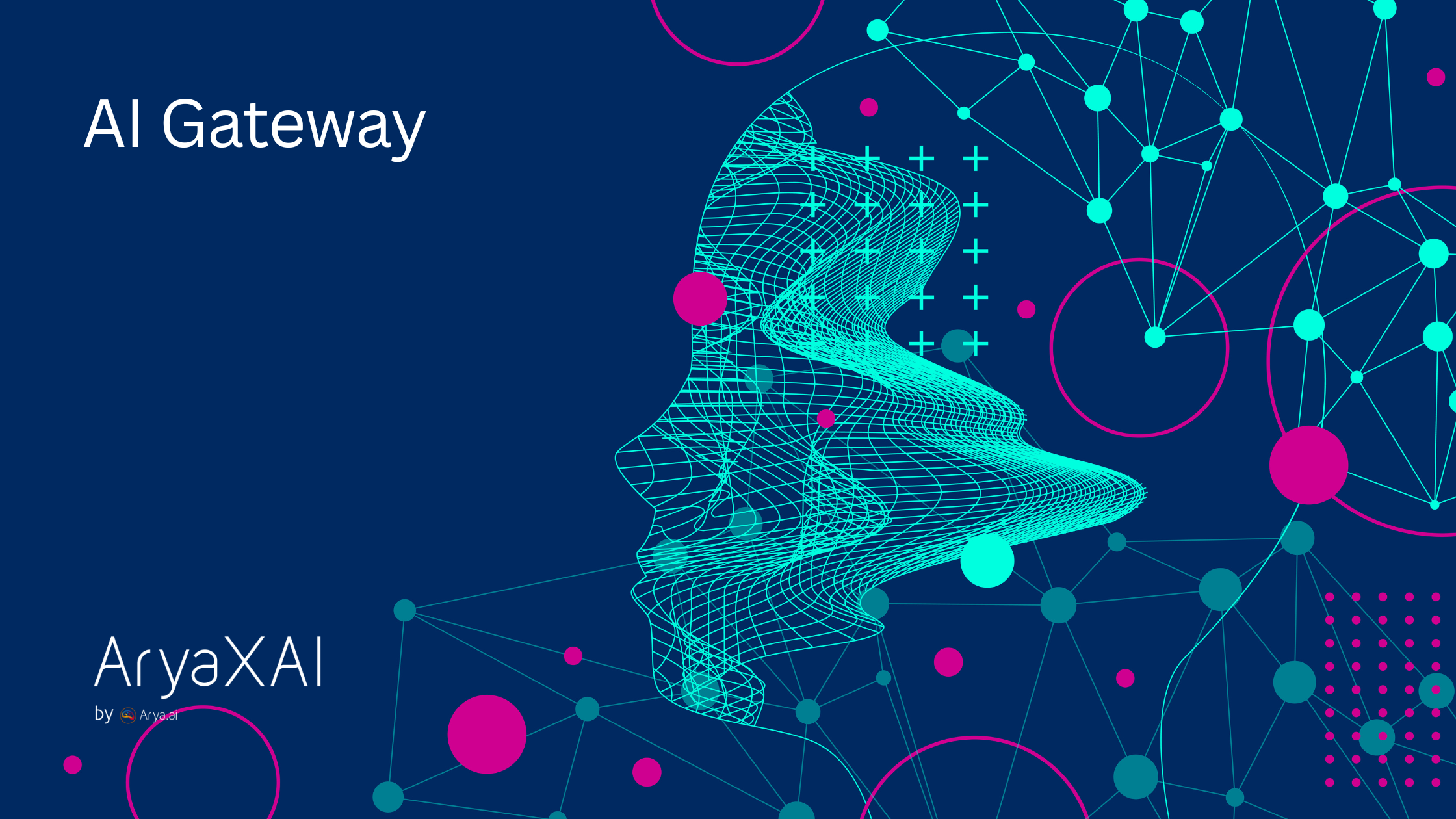What is AI Inferencing
October 16, 2025
.png)
Artificial intelligence (AI) systems do more than just learn from data; they also need to apply what they’ve learned to solve problems in the real world. This process is called as AI inferencing - the stage where a trained model takes new input data and generates predictions or decisions. Without efficient inference, even the most sophisticated models cannot deliver value to businesses or end users.
In this guide you’ll learn what AI inference means, how it differs from the training phase, the types of inference techniques, real‑world use cases and challenges, and how platforms like AryaXAI help organizations monitor and explain AI decisions. Wherever possible, we reference cutting‑edge research and related blog posts on AryaXAI’s site so you can dive deeper into topics that interest you.
Defining AI Inferencing
Inference is the moment when an AI model goes from learning to doing. After a model has been trained on curated datasets, inference happens when that model sees unseen data and uses its learned patterns to make a prediction or recommendation. IBM notes that AI inference is “the ability of trained AI models to recognize patterns and draw conclusions from information they haven’t seen before”. Oracle likewise explains that inference occurs when a model starts to recognize patterns in data it never saw during training and can “reason and make predictions in a way that mimics human abilities”.
Training vs. Inference
Although often used interchangeably, training and inference are distinct stages of the AI lifecycle. During training, machine‑learning algorithms digest large datasets and adjust internal parameters to minimize error. Inference uses those trained parameters to process new data with low latency and high accuracy. As Akamai’s glossary explains, training involves feeding large datasets into an algorithm to learn patterns, whereas inference is the deployment phase where the trained model produces outputs based on new data.
What is Training?
It teaches the model to recognize patterns using labelled data. Requires significant computational resources and time; adjustments to weights are iterative.
Example: Feeding millions of images of animals to a model so it learns to distinguish between species.
What is Inference?
Applies the trained model to unseen data to generate predictions or decisions. Focuses on low latency and real‑time performance.
Example: Recognizing a cat in a new photo or translating a sentence in real time.
How AI Inference Works
The inference workflow consists of several steps:
- Data preprocessing: Incoming data (text, images, sensor readings, etc.) is normalized or transformed into the format expected by the model.
- Model execution: The preprocessed input is fed into the trained model. The model’s parameters—learned during training—compute a mapping from inputs to outputs.
- Output generation: The model produces a result such as a class label, probability distribution or natural‑language text. In healthcare, for instance, a model might process a medical image and return a predicted diagnosis.
- Post‑processing & delivery: Depending on the application, outputs may be formatted, filtered or combined with other information before being returned to the user or downstream system.
Low latency is critical in many inference scenarios—autonomous vehicles must decide to brake or accelerate within milliseconds, while chatbots need to respond instantly in natural language. Modern inference engines optimize compute resources to ensure fast response times (see “Inference Engines and Hardware” below).
Why AI Inference Matters
Inference is the operative phase of AI—the stage where models create value by making decisions in real time. Oracle describes inference as the “meat and potatoes of any AI program” because it enables trained models to recognize patterns and infer accurate conclusions on new data. Red Hat similarly points out that AI inference is “the operational phase of AI” where models apply what they’ve learned to real‑world situations.
Why is this so important?
- Real‑time decision making: AI systems often must react immediately—think of fraud detection systems scanning transactions or driver‑assistance systems interpreting road conditions. Without fast inference, the value of these applications diminishes.
- Business value: Inference delivers the actionable results that businesses need. Models that can read X‑rays in seconds or flag fraudulent credit‑card transactions in real time provide tangible benefits.
- Efficiency & scalability: Because up to 90 % of an AI model’s life is spent performing inference, improving inferencing efficiency reduces operational costs and environmental impact. IBM Research highlights how inference consumes significant energy and can have a large carbon footprint.
Types of AI Inference
Not all inference is the same. Organizations can choose different approaches depending on latency requirements and resource constraints. Here are three common types:
Batch inference:
Processes data in large batches offline, often at scheduled intervals. Suitable when predictions don’t need to be immediate.
Online (dynamic) inference:
Produces predictions in real time with low latency. Requires careful optimization of hardware and software to meet responsiveness demands.
Streaming inference:
Continuously processes a stream of data from sensors or devices to generate ongoing predictions.
Applications and Use Cases
AI inference underpins numerous industries. Below are a few prominent examples, with sources linking to more detailed articles on AryaXAI for readers who wish to explore specific sectors:
- Healthcare: Models trained on medical images can diagnose conditions like cancer or pneumonia and provide doctors with decision support. Inference helps identify anomalies on scans faster than humans, leading to earlier interventions.
- Finance: Financial institutions use inference to detect fraud in real time and analyze credit risk. After training on large banking datasets, inference models can “identify errors or unusual data in real‑time to catch fraud early and quickly”. For a deep dive into how AI supports finance at the edge, read Arya’s blog on Edge AI in Finance.
- Automotive & Robotics: Autonomous vehicles rely heavily on inference to interpret sensor data and make driving decisions instantly. Red Hat notes that inference helps vehicles navigate efficiently and brake at stop signs, while Akamai highlights the need for low latency in these environments.
- Internet of Things (IoT): Smart homes and cities use inference to adjust heating, lighting or traffic flow based on real‑time data. Streaming inference allows IoT devices to adapt autonomously.
- Generative AI: Large language models (LLMs) like ChatGPT generate human‑like text by performing inference to predict the next token. AryaXAI’s research blog Analysis of Top AI Inferencing Research: September 2025 Edition summarizes recent advances in LLM inference efficiency and is an excellent resource for readers interested in the cutting edge of inferencing research.
Challenges in AI Inference
While inference powers many breakthroughs, it also presents significant challenges:
- Regulatory compliance: Global data sovereignty laws make cross‑border data handling complex. IBM notes that compliance is a key challenge because data is subject to different laws in the country where it’s generated.
- Data quality & complexity: Poorly labeled or irrelevant data leads to low‑quality predictions. Complex tasks (e.g., medical imaging) require more sophisticated models, which are harder to train and run.
- Resource demands: Inference must be efficient yet performant. Running large models consumes energy and can be costly. Low latency is essential for real‑time applications, but achieving it on constrained devices remains difficult.
- Scaling & cost: Red Hat points out that scaling inference across many users or devices requires robust infrastructure and can be expensive.
These challenges drive innovation in hardware, algorithms and tooling.
Inference Engines and Hardware Considerations
An AI inference engine is a software component that manages the execution of trained models, optimizing for low latency and high performance. Such engines orchestrate computation across CPUs, GPUs or specialized accelerators and often incorporate techniques like quantization and pruning to speed up processing.
GPUs vs. CPUs
Graphics processing units (GPUs) excel at parallel processing and are widely used for both training and inference. However, inference workloads can also run efficiently on CPUs with the right optimizations. Akamai notes that GPUs can significantly reduce inference latency, while modern CPUs coupled with lookup‑table accelerators and other innovations can offer competitive performance.
Specialized hardware
Research into dedicated inferencing chips is accelerating. IBM developed the Telum processor and Artificial Intelligence Unit (AIU) to optimize matrix operations for deep learning. Pruning and quantization techniques reduce model size and improve inference speed, while middleware improvements like graph fusion and kernel optimization further lower latency. For an overview of the latest hardware‑software co‑design strategies, AryaXAI’s research article linked above provides curated summaries.
AryaXAI’s Role in AI Inference and Observability
Understanding how a model arrives at its predictions is essential for trust and compliance. AryaXAI offers a suite of products to make AI more transparent and controllable:
- Explainable AI: AryaXAI’s explainability toolkit provides true‑to‑model explanations for complex techniques like deep learning. It supports multiple explanation types (feature importance, similar cases and what‑if scenarios), allowing stakeholders to see why a model produced a particular output. Real‑time explanations can be delivered via API - ideal for inference workloads where transparency is paramount. The platform even uses its own backtrace algorithm to trace predictions to their training data.
- ML Monitoring & Audit: Inference is not a set‑and‑forget process. Models can drift over time or behave unexpectedly. AryaXAI’s monitoring and audit tools help track model performance, detect deviations and maintain compliance across the model lifecycle. Visit the ML Monitoring and ML Audit pages to learn more.
- Research & Innovation: AryaXAI conducts research on explainability, alignment and safety. The Research page outlines current projects aimed at developing new explainability techniques, aligning models with user goals and improving robustness. Many of these advancements directly enhance inference performance and reliability.
By integrating observability and explainability tools into the inference workflow, organizations can not only get accurate results but also understand and trust those results.
Future Outlook and Continuing Research
AI inference will continue to evolve rapidly. Advances in hardware (e.g., matrix‑multiplication accelerators), software (graph fusion and dynamic batching) and algorithmic techniques (quantization, pruning, speculative decoding) promise to deliver faster and more energy‑efficient inference. Multi‑token prediction and KV‑cache compression for large language models are already reducing latency and compute overhead, as highlighted in AryaXAI’s research round‑up article. At the same time, regulatory and ethical considerations will shape how organizations deploy AI. Trusted explainability, privacy‑preserving techniques and alignment with user values will be key differentiators. Platforms like AryaXAI - which combine model monitoring, explainability and policy controls, are well‑positioned to help enterprises navigate this landscape.
Explore More
For further reading and to deepen your understanding of AI inference and related topics, check out these resources:
- Analysis of Top AI Inferencing Research: September 2025 Edition – a curated review of the latest papers on inference efficiency and hardware innovations, hosted on AryaXAI.
- Edge AI in Finance: Driving Real‑time Decision Making at Scale – an Arya.ai blog exploring how inference moves to the edge in financial services.
- Explainable AI at AryaXAI – learn how backtrace and what‑if analyses can help you understand model behavior in real time.
- AI & ML Wiki – browse quick definitions and best practices on MLOps, synthetic data, quantization and more on AryaXAI’s wiki.
SHARE THIS
Discover More Articles
Explore a curated collection of in-depth articles covering the latest advancements, insights, and trends in AI, MLOps, governance, and more. Stay informed with expert analyses, thought leadership, and actionable knowledge to drive innovation in your field.

Is Explainability critical for your AI solutions?
Schedule a demo with our team to understand how AryaXAI can make your mission-critical 'AI' acceptable and aligned with all your stakeholders.



.png)



















